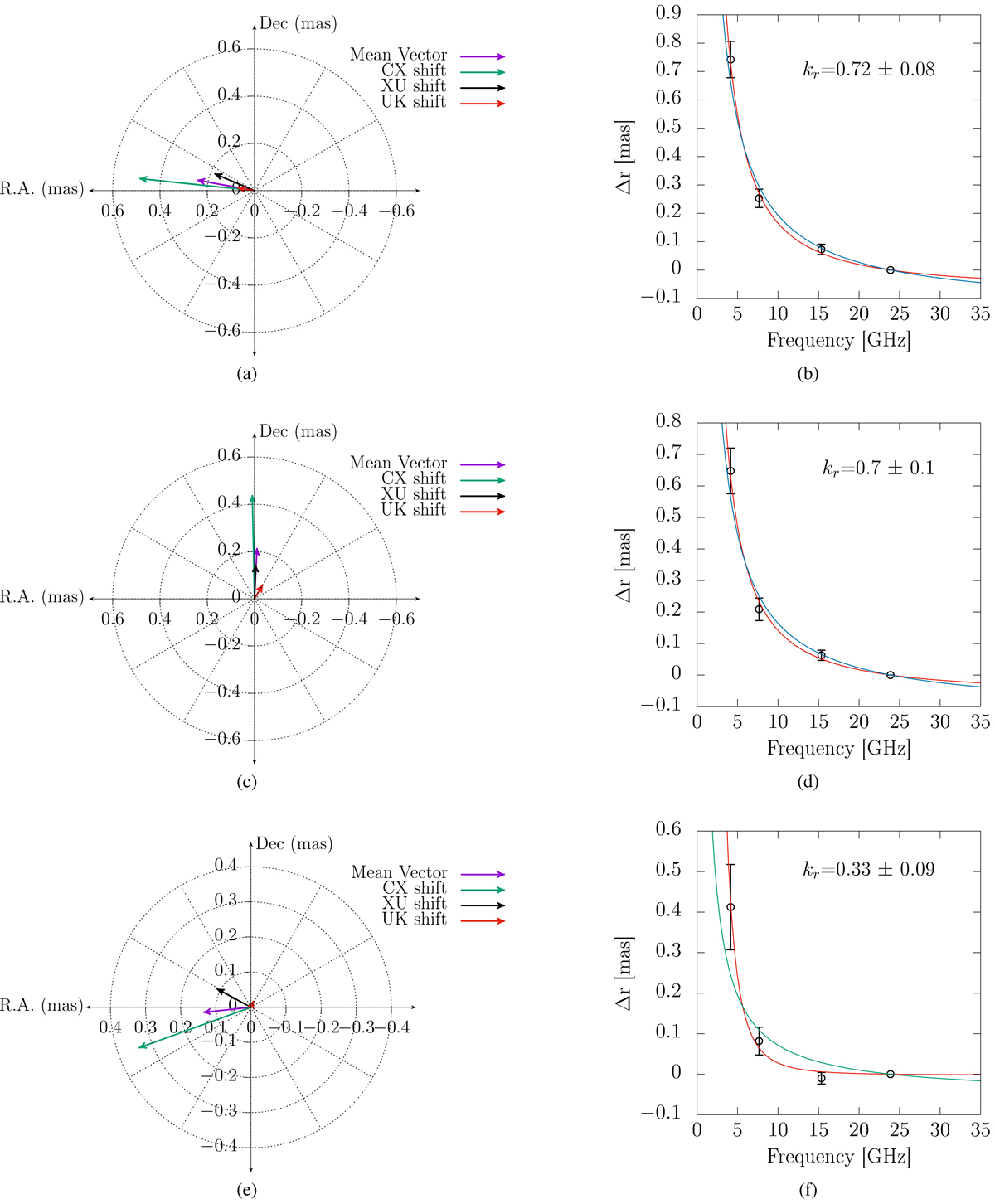Fig. 4.

Core-shift vectors and core-shift power-law fits for each calibrator. Left: self-referencing core-shift vectors in polar grids. The dotted lines are given at intervals of 30 degrees. (a) J0006: all vectors consistently point in the jet direction towards the east (see Fig. B.1). (c) J0007: CX, XU, and the mean vectors consistently point in the jet direction towards the north, while the UK vector points towards the north-west (see Fig. B.2). (e) J0008: only the CX and the mean vector consistently point in the jet direction towards the south-east (see Fig. B.3). Right: core shift (Δr) as a function of frequency (νGHz). The red curve indicates the best fit of the form: ![]() with the K-band as the reference frequency. The blue and green curves indicate the fits when the power-law index kr is set to 1 with the fitting function:
with the K-band as the reference frequency. The blue and green curves indicate the fits when the power-law index kr is set to 1 with the fitting function: ![]() . The constants a and b are fitting parameters. (b) J0006: the best fitting curve gives a = 5.8 ± 1.4 and kr = 0.72 ± 0.08. The fit with kr = 1 gives b = 3.3 ± 0.2. (d) J0007: the best fitting curve gives a = 5.04 ± 1.61 and kr = 0.71 ± 0.11. The fit with kr = 1 gives b = 2.8 ± 0.2. (f) J0008: the best fitting curve gives a = 31.7 ± 38.8 and kr = 0.33 ± 0.09. Without the U-band, the fit with kr = 1 gives b = 1.2 ± 0.4.
. The constants a and b are fitting parameters. (b) J0006: the best fitting curve gives a = 5.8 ± 1.4 and kr = 0.72 ± 0.08. The fit with kr = 1 gives b = 3.3 ± 0.2. (d) J0007: the best fitting curve gives a = 5.04 ± 1.61 and kr = 0.71 ± 0.11. The fit with kr = 1 gives b = 2.8 ± 0.2. (f) J0008: the best fitting curve gives a = 31.7 ± 38.8 and kr = 0.33 ± 0.09. Without the U-band, the fit with kr = 1 gives b = 1.2 ± 0.4.
Current usage metrics show cumulative count of Article Views (full-text article views including HTML views, PDF and ePub downloads, according to the available data) and Abstracts Views on Vision4Press platform.
Data correspond to usage on the plateform after 2015. The current usage metrics is available 48-96 hours after online publication and is updated daily on week days.
Initial download of the metrics may take a while.


